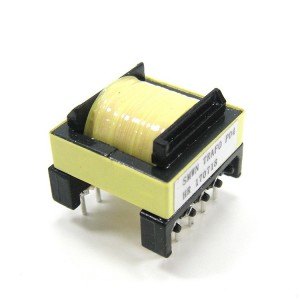Transformers are essential components in electrical systems, playing a crucial role in the transmission and distribution of power. They come in various types, including low frequency transformers and high frequency transformers, each designed to operate within specific frequency ranges. Understanding the differences between these two types of transformers is important for anyone working with electrical systems. In this article, we will explore what low frequency transformers are, delve into the differences between high frequency and low frequency transformers, and discuss their respective applications.
What is a Low Frequency Transformer?
A low frequency transformer is a type of electrical transformer designed to operate at frequencies typically below 500 Hz. These transformers are commonly used in power distribution systems, industrial applications, and various electrical devices. They are designed to handle high power levels and are often larger and heavier compared to high frequency transformers. Low frequency transformers are known for their ability to efficiently transfer electrical energy from one circuit to another, with minimal energy loss.
The Difference between High Frequency Transformer and Low Frequency Transformer
The primary difference between high frequency transformers and low frequency transformers lies in the frequency range at which they operate. High frequency transformers are designed to operate at frequencies above 500 Hz, often reaching into the kilohertz or even megahertz range. In contrast, low frequency transformers operate at frequencies below 500 Hz. This difference in frequency range leads to several distinct characteristics and applications for each type of transformer.
One of the key differences between high frequency and low frequency transformers is their size and weight. High frequency transformers are typically smaller and lighter than low frequency transformers, making them suitable for applications where space and weight are critical factors. Additionally, high frequency transformers are known for their ability to provide efficient power conversion in electronic devices such as inverters, switch-mode power supplies, and radio frequency applications.

Low frequency transformers, on the other hand, are designed for high power applications where efficiency and reliability are paramount. These transformers are commonly used in power distribution systems, industrial machinery, and heavy-duty electrical equipment. Their larger size allows them to handle higher power levels while minimizing energy losses, making them ideal for applications where power quality and reliability are critical.
Another important difference between high frequency and low frequency transformers is their core materials and construction. High frequency transformers often use ferrite cores or other high-permeability materials to achieve efficient operation at higher frequencies. In contrast, low frequency transformers typically use laminated steel cores to handle the higher magnetic flux levels associated with lower frequencies. This difference in core materials and construction reflects the unique design requirements of each type of transformer based on their operating frequency range.
Applications of Low Frequency Transformers and High Frequency Transformers
Low frequency transformers find widespread use in power distribution systems, electrical substations, industrial machinery, and heavy-duty electrical equipment. Their ability to handle high power levels and minimize energy losses makes them essential components in ensuring reliable power transmission and distribution. Additionally, low frequency transformers are used in various industrial applications such as welding equipment, motor drives, and power supplies for heavy machinery.
High frequency transformers are commonly employed in electronic devices and systems where efficient power conversion and compact size are essential. They are widely used in switch-mode power supplies, telecommunications equipment, audio amplifiers, and radio frequency applications. The compact size and high efficiency of high frequency transformers make them ideal for modern electronic devices that require reliable power conversion in a limited space.
In conclusion, the differences between high frequency transformers and low frequency transformers are rooted in their operating frequency range, size, construction, and applications. While high frequency transformers excel in efficient power conversion and compact size for electronic devices, low frequency transformers are essential for handling high power levels and ensuring reliable power transmission and distribution. Understanding the unique characteristics and applications of each type of transformer is crucial for designing and implementing efficient and reliable electrical systems.
Post time: Jul-29-2024

